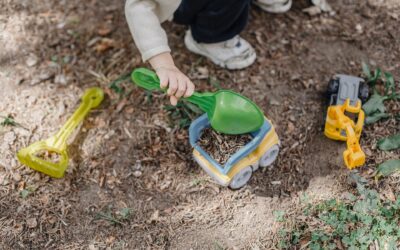No. 75: Create outdoor classrooms, use them and turn off power inside!
No. 75: Create outdoor classrooms, use them and turn off power inside!
Number 75
Learn why you should do this:
Creating outdoor classrooms can provide many environmental, educational, and financial benefits for schools. Outdoor learning spaces can reduce energy consumption by turning off power inside, promote hands-on learning experiences, and increase student engagement with nature.
From an environmental perspective, creating outdoor classrooms can reduce energy consumption and greenhouse gas emissions associated with the use of heating, ventilation, and air conditioning (HVAC) systems. According to the U.S. Department of Energy, HVAC systems account for roughly 39% of the energy used in commercial buildings, including schools. By using outdoor classrooms, schools can reduce the amount of energy used for indoor climate control and lighting, thus lowering their carbon footprint.
In addition to the environmental benefits, outdoor classrooms can provide unique educational opportunities for students. Outdoor learning can enhance critical thinking, problem-solving skills, and creativity. Research has shown that children who learn in natural settings are more engaged and focused, resulting in better academic performance.
Moreover, outdoor classrooms can help connect students with nature, leading to a greater appreciation and understanding of the environment. By learning outdoors, students can develop a sense of responsibility for the natural world and become more environmentally conscious.
From a financial perspective, creating outdoor classrooms can also provide cost savings for schools. According to the Collaborative for High Performance Schools (CHPS), outdoor classrooms can save up to 33% of the cost of indoor classrooms. This is because outdoor classrooms do not require as much HVAC or lighting, and construction costs are typically lower than traditional indoor classrooms.
To further reduce energy consumption and costs, schools can also turn off power inside when using outdoor classrooms. This includes turning off lights, computers, and other electronic devices. By doing so, schools can save on electricity bills and reduce their carbon footprint.
However, creating outdoor classrooms does require some initial investment. Schools will need to purchase outdoor furniture, equipment, and shade structures to make the space functional and comfortable. Fortunately, there are many grants and funding opportunities available for schools interested in creating outdoor classrooms.
In conclusion, creating outdoor classrooms can provide many environmental, educational, and financial benefits for schools. Outdoor learning spaces can reduce energy consumption, promote hands-on learning experiences, and increase student engagement with nature. While there is an initial investment required, the long-term benefits can provide cost savings for schools and a better learning experience for students.
Sources:
- U.S. Department of Energy. “Commercial Building Energy Consumption Survey (CBECS).” https://www.eia.gov/consumption/commercial/data/2012/bc/cfm/b8.php
- National Wildlife Federation. “Nature Benefits of Outdoor Education.” https://www.nwf.org/Our-Work/Environmental-Education/Impact/Why-Outdoor-Education-Matters
- Collaborative for High Performance Schools (CHPS). “Outdoor Learning Design.” https://www.chps.net/dev/sites/default/files/CHPS-Outdoor-Learning-Design-Guide.pdf

All 100 ideas in one, easy to share ebook. Download now and start helping your school be its best version of itself...
Downloaded over 17,000 times!

More ways to make a difference, now!
No. 26: Install bike racks at school
Number 26 Installing bike racks in schools can benefit the environment, promote physical activity, and save money. Students who bike to school have improved physical fitness and academic performance, while schools can save money on transportation costs and reduce...
No. 18: Use digital signage instead of paper posters
Number 18 Using energy-efficient digital signage instead of paper posters in schools has environmental and financial benefits. It reduces waste and saves energy, resulting in cost savings. Experts suggest that digital signage is also more effective in communicating...
No. 4: Create sustainable play areas
Number 4 This article discusses the environmental and financial benefits of creating sustainable play areas in schools. These play areas reduce waste, promote a connection to nature, reduce carbon emissions, and save schools money on maintenance and utility bills....





